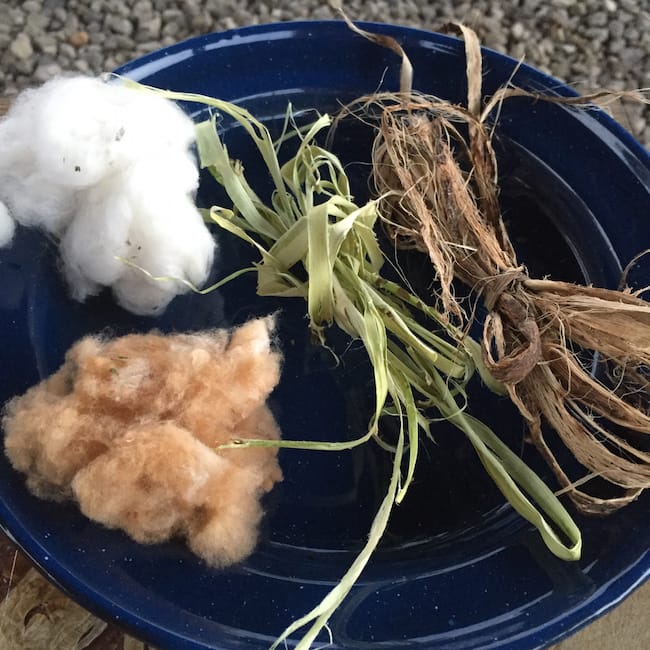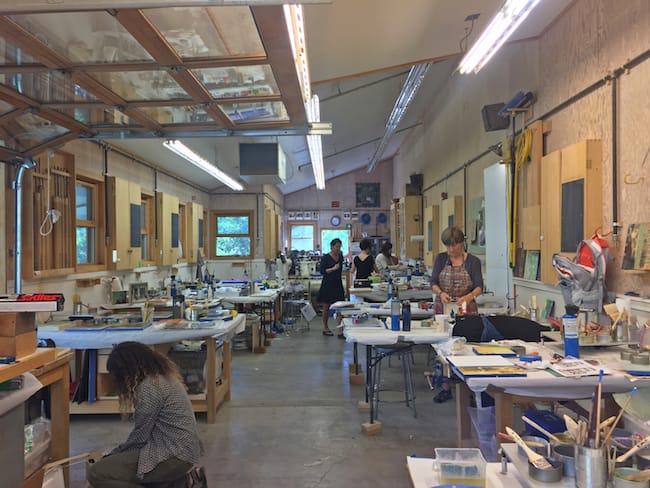

Uh oh...
It appears that you're using a severely outdated version of Safari on Windows. Many features won't work correctly, and functionality can't be guaranteed. Please try viewing this website in Edge, Mozilla, Chrome, or another modern browser. Sorry for any inconvenience this may have caused!
Read More about this safari issue.

Artists create for many different reasons. Often the goal is more about the subject matter rather than the materials used to create the piece. For Melissa Cowper-Smith art is about connecting with nature and people. Her goal is to overcome physicality with her work and create a more important story that transcends material yet connects to it at the same time.
“People are craving intimacy with local things. They want to buy into something authentic. ‘Shop local’ and ‘eat local’ are topics people are interested in because it helps give meaning to life.”

This is essentially the driving principle behind Cowper-Smith’s work. She began to look into her own life and wondered what it meant to consume so much stuff. Could life be simpler? Can we overcome mass production?
Cowper-Smith began to create pieces that went beyond ‘plastic on canvas’. Cowper-Smith found herself conducting extensive interviews, taking thousands of photographs, and even going as far as planting and growing her own cotton to connect more deeply with her artistic process.

Each piece Cowper-Smith creates is the result of hours of research and hard labor. They are not just pictures but pieces that tell a story. And this as a whole is what makes her the perfect recipient of the 2018 Polly Wood Crews Scholarship which is awarded annually by the Arkansas Committee of the National Museum of Women in the Arts to a deserving female Arkansas artist.
Cowper-Smith has three dueling passions: art, gardening and horses. A Canadian native, her mother instilled in her a love for gardening. Her grandparents owned a cattle ranch where she spent a lot of time as a child. As she began her exploration of art, much of her work was of plants and nature.

Her undergraduate art degree had a heavy ecology background which further fueled her passion for including nature in her art. She attended a graduate program in New York City and found it shocking to be so far from nature.
“I longed for the ground; for a connection to nature.”
When her husband who was also studying in NYC was awarded a job at Hendrix College in Conway, she was eager to leave the city behind.
“I knew nothing about Arkansas but knew it would provide me with that connection to nature that I craved. It also helped that the cost of living in Arkansas is so affordable. Financially, I can follow my dreams here in Arkansas.”
Over time, Cowper-Smith has moved from the use of traditional materials such as canvas and paint to creating pigment prints on handmade papers. The way she makes art has developed and changed based on ideas and suggestions from a critique club. The club meets once a month and is comprised of female artists from around Central Arkansas, including Holly Laws who’s work is currently on display in Heavy Metal — Women to Watch 2018 and international exhibit at the National Museum of Women in the Arts in Washington, D.C.

Winning the Polly Wood Crews scholarship provided Cowper-Smith with the opportunity to further her study of different media and find new ways to connect with nature through art. Having applied for the scholarship on several other occasions she was prepared for another rejection. Cowper-Smith had set a goal to apply for as many opportunities as possible and be okay with whatever the outcome. About the time she received word that she had been selected as the Polly Wood Crews recipient she also received notification of a tuition reduction for the Anderson Ranch Arts Center in Aspen, Colorado. Combining the scholarship with the tuition reduction meant Cowper-Smith would be able to attend a weeklong program that would have otherwise been out of reach.
In June, Melissa Cowper-Smith traveled to Aspen to take part in a photo encaustic workshop with artist and professor K Rhynus Cesark. Encaustic uses a combination of beeswax, damar resin and other natural elements. Cowper-Smith was drawn to this method because it would make use of the beeswax she harvests from her own behaves and would also allow her to incorporate the photographs, handmade paper and other plants and natural elements she had grown accustomed to using in her work. Encaustic also pairs well with pigment prints, a medium she is well versed in.

Cowper-Smiths current project is to create a series of artworks based on people in Central Arkansas and the Ozarks who grow their own medicine. Ethnobotany is a sometimes misunderstood science and Cowper-Smith hopes her work will tell the story of how these individuals have been impacted by the medicines they grow.
Melissa Cowper-Smith is currently gathering herbs and other plant material which she will use to make paper. She will combine her handmade paper with photographs taken during the research phase and will create pieces that tell the story of medicinal plants and herbalists across Arkansas.

Melissa Cowper-Smith’s work can be viewed in two upcoming exhibits:
Butler Center Galleries — January — March 2019
Batesville Area Arts Council — March — April 2019
You can view more of Melissa Cowper-Smiths work and learn more about her current project on her website.
We do the work.
You check your email.
Sign up for our weekly e-news.
Get stories sent straight to your inbox!









Like this story? Read more from Julie Kohl
Start your engines! My race-car-loving kid recently turned nine and had...
Many years ago, a group of bald eagles roosted near the water treatment...
Harding University’s season came to a close Saturday night in Texas...
Join the Conversation
Leave a Comment